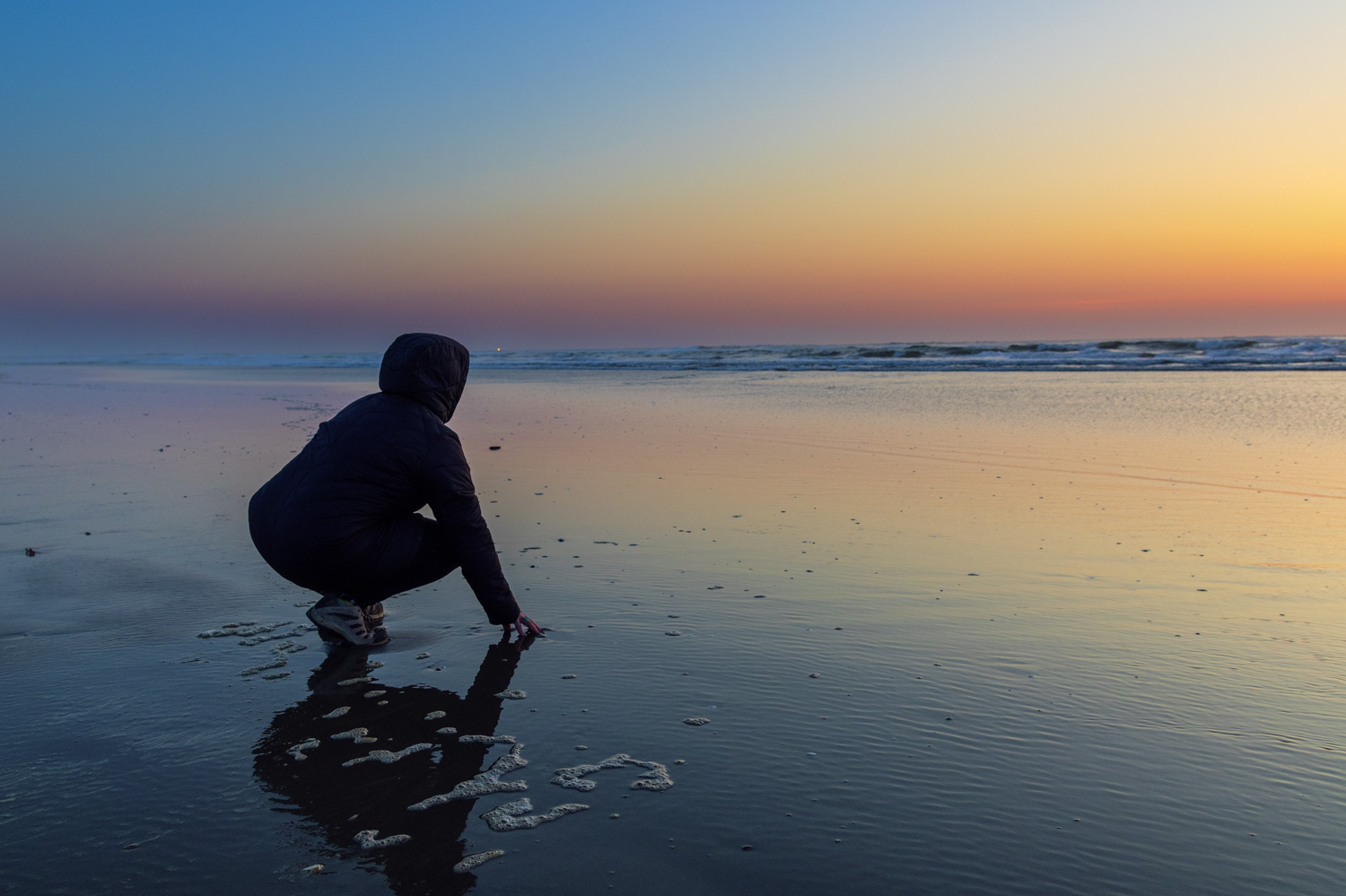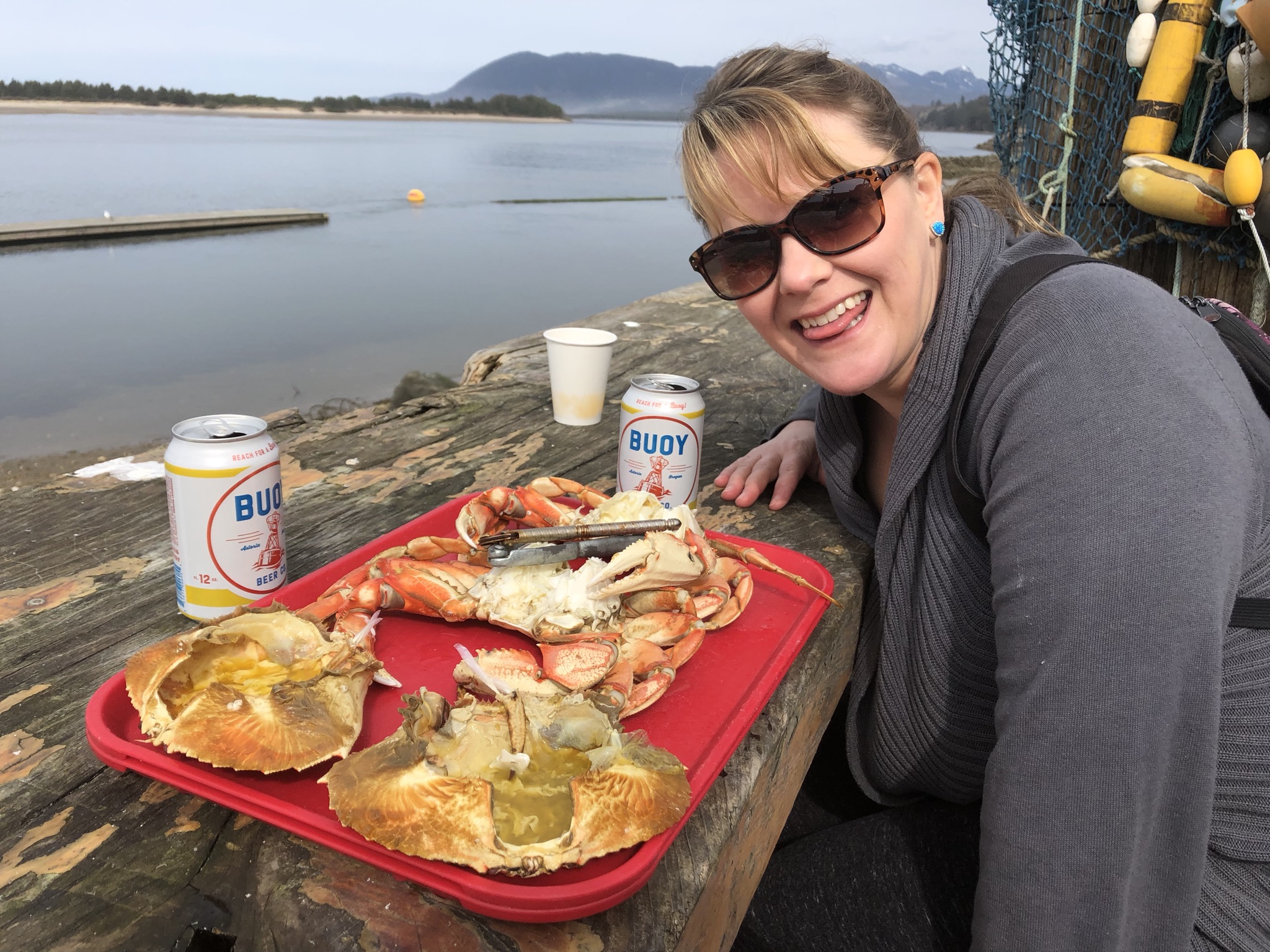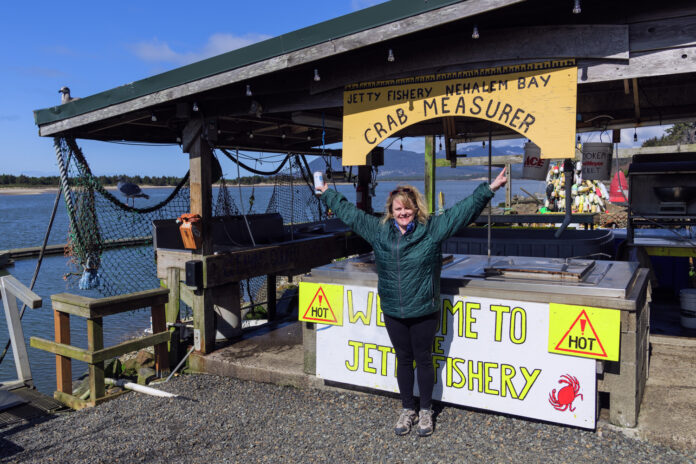Nestled along Oregon’s northern coast, Nehalem Bay is where the Nehalem River meets the Pacific Ocean, forming an estuarine bay that blends fresh and salt water, marshes, and tidal flats. It sits in Tillamook County, framed by the small coastal towns of Nehalem, Manzanita, and Wheeler and one of our favorite places on planet Earth.
As Oregon’s fifth-largest estuary, Nehalem Bay drains a watershed of more than 850 square miles. The Nehalem River is its primary tributary, bringing fresh water, sediments, and nutrients down from the Coast Range. On the ocean side, the bay is shielded from direct waves by a long sand spit that hosts Nehalem Bay State Park, a natural buffer between the bay and the open Pacific.
Landscape, Rivers, and Geology
The Nehalem watershed cuts through the Oregon Coast Range, a landscape of steep hills, dense forest, and narrow valleys. Over time, erosion, uplift, and sea-level changes have sculpted the terrain, pouring sediments and debris toward the coast. The river carries those sediments, especially during heavy rains, creating silty tidal flats, sandbars, and marshes.
Near the bay, the estuarine environment is dynamic: tides push seawater upstream while fresh water moves down, constantly reshaping mudflats and channels. The sand spit itself shifts with storms and currents, a living landform that continues to evolve.
Archaeological discoveries reveal that people have adapted to this shifting coast for centuries. The Spruce Tree Site in Nehalem Bay State Park shows evidence of Native settlement and food gathering as early as the late 1400s. Earthquakes and coastal subsidence have also left their mark on the landscape. Not far from the bay, artifacts from a Spanish trading ship — nicknamed the “Beeswax Wreck” — have surfaced over the years, reminders of long-distance trade and early maritime contact.

From First Peoples to Settlers: History & Foundation
Indigenous Era
Long before Europeans arrived, the Nehalem area was home to Native peoples who lived off the rivers, forests, and sea. The name “Nehalem” is said to mean “where the people live.” Coastal tribes fished the river and bay, gathered shellfish, hunted game, and maintained seasonal trade networks along the coast.
European Contact & Early Development
Explorers and traders reached Oregon’s coast over the centuries. Local lore suggests that early seafarers may have anchored in the sheltered bay. The more documented event was the wreck of a Spanish trade ship that scattered beeswax and porcelain along the shore, becoming part of regional legend.
By the late 1800s, settlers moved into the valley. Homesteaders logged the forest, farmed the fertile lowlands, and used the river as their transportation route. Timber dominated the economy for decades, with rail spurs and barges moving logs to market. The city of Nehalem was officially incorporated in the late 19th century, taking its name from the Native people who had long lived there.
Development remained slow because of the rugged terrain and limited access. Coastal highways didn’t connect these towns until the mid-20th century. Once Highway 101 was completed, Nehalem and its neighbors became easier to reach, and tourism began to complement logging and farming.
Nehalem Bay State Park was established in the 20th century on the sand spit, with dune stabilization projects and campgrounds transforming it into a recreation hub.
The Community: Life by the Bay
Today, the towns around Nehalem Bay are small but vibrant. The city of Nehalem is compact and flood-prone, with elevated buildings and a cozy, frontier-style downtown. Life moves at a coastal pace, tied to both the seasons and the tides.
Tourism drives much of the local economy, with visitors coming to camp, fish, crab, beachcomb, and enjoy the scenic beauty. Small businesses — from art galleries to specialty shops — thrive alongside marinas, lodges, and local eateries. Many residents work in hospitality, construction, public services, or natural resource management.
Community spirit is strong. Local history groups preserve photographs and oral stories, while conservation and civic organizations work to protect the bay and maintain its small-town character. Flooding, sea-level rise, and the challenge of balancing growth with preservation are ongoing conversations.

Crabbing, Fishing & Shellfish: The Bounty of Nehalem Bay
Nehalem Bay is famous for its rich shellfish beds and fish runs, sustaining both livelihoods and traditions.
Crabbing & Clamming
Dungeness crab is king here. Locals and visitors alike drop pots and rings in the bay’s tidal channels. Softshell and varnish clams are abundant, dug during low tides on mudflats. Family-run marinas rent gear, sell bait, and offer tips on where the crabs are biting. Crabbing is as much a cultural ritual as an economic pursuit — and strict size and catch limits help keep it sustainable.
Fishing
The Nehalem River and bay draw anglers year-round. Chinook and coho salmon return in late summer and fall, trolled by boaters in the bay or caught by bank anglers in the river’s forks. Steelhead run the North Fork, while sturgeon and other bottomfish linger near the jetties. Summer brings perch and other nearshore species, keeping the fishing scene lively across the seasons.
Local guide services, charters, and bait shops support this mix of commercial and recreational fishing, ensuring the bay remains a working waterway as well as a playground.

Challenges & Conservation
Nehalem Bay’s abundance is not without risk. Tidal wetlands are fragile and can be degraded by runoff, development, and overuse. Sea-level rise and winter storms threaten low-lying infrastructure. Fisheries depend on careful management, with rules on seasons and catch limits designed to protect future harvests.
Local groups and state agencies work together to restore wetlands, plant native vegetation, monitor shellfish beds, and educate both residents and visitors about responsible harvesting and watershed health.
A Bay of Possibility
Nehalem Bay embodies the rugged, adaptable spirit of the Oregon Coast. It’s a place where tides and forests meet, where history lives in old timbers and Native roots, and where families still launch crab pots and fishing lines with the same quiet hope their ancestors felt.
For travelers, it’s a mix of working waterfront and serene escape: a foggy morning over the river, a crackling campfire in the dunes, the weight of a crab pot pulled from brackish water. For the community, it’s home — resilient, beautiful, and ever shaped by the sea.
References and research
- Nehalem Bay – Wikipedia
- Nehalem Bay State Park – Wikipedia
- City of Nehalem – Wikipedia
- Nehalem Valley Historical Society – History in Brief
- Visit the Oregon Coast – Nehalem
- Oregon State Parks – Nehalem Bay State Park
- Oregon Department of Fish & Wildlife – Crabbing & Clamming Nehalem Bay
- Best Fishing in America – Nehalem Bay
- Oregon Fishing Forum – Nehalem Bay
- The Nehalem River Inn – Crabbing on Nehalem Bay
- Tillamook Coast – Nehalem
- Tillamook County Pioneer – Fun Facts about Nehalem Bay





